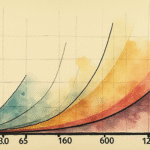Introduction
On April 2, U.S. President Donald Trump launched a tariff storm that has sent global markets plummeting. Despite the backlash, Trump insists there’s no turning back. This article explores possible reasons behind Trump’s tariff offensive, revealing that it’s less about the U.S. economy and more about his desire for unilateral global power.
The Illusion of Reviving Manufacturing Jobs
Trump believes tariffs will bring manufacturing jobs back to the U.S. and restore the nation’s economic grandeur. However, this idea was improbable at best. Since April 2, the New York Stock Exchange has crashed, analysts predict a potential recession, and the Federal Reserve faces pressure to cut interest rates and stabilize the situation.
Economic textbooks suggest tariffs should appreciate the dollar, as fewer imports mean fewer dollars sold in foreign exchange markets. Yet, Trump’s tariffs have caused the dollar to depreciate against major currencies, indicating that market operators anticipate a decrease in U.S. economic activity.
Misguided Protectionism for American Workers
Assuming Trump cares about U.S. workers, perhaps he aims to reward Midwestern laborers who voted for him. However, tariffs on finished goods like foreign cars offer some protection to U.S. companies and workers. Conversely, tariffs on imported car parts make domestic car manufacturing less profitable.
While details remain unclear, Trump’s tariff explosion could reduce effective protection for U.S. industry, destroying existing manufacturing jobs instead of creating new ones.
Tech Titans Unaffected
Conspiratorially, Trump might aim to enrich tech oligarchs like Elon Musk. Yet, the economic logic doesn’t add up. The tech industry is predominantly export-driven, and the U.S. still leads globally (despite China’s rapid rise). Protecting the domestic market from imports isn’t a concern for tech magnates, and they don’t seek tariff-based protection from the government.
If affected countries retaliate, they might target U.S. tech services, where the U.S. holds a trade surplus. Consequently, non-U.S. residents using American tech for work and leisure may face higher costs.
Trump’s Geoeconomic Strategy: A Flawed Approach
Economist Albert Hirschman, in 1945, invented geoeconomics—now a popular field. He distinguished between the supply effect (trade enriches a nation, strengthening its political and military standing) and the influence effect (a large, wealthy nation exerts political power by restricting other countries’ market access).
Trump seems to appeal to the influence effect, making it costlier for foreign competitors to sell goods in the U.S. However, Hirschman’s analysis doesn’t end here. To solidify political power through trade, a nation should focus on countries that pose economic and political threats, heavily rely on trade for prosperity, and struggle to divert trade to third parties.
Considering Trump’s tariff targets, such as Canada (trade-dependent but not threatening), Asian nations with limited trade ties to the U.S., and prosperous Lesotho (a small, poor African nation), it’s unlikely his team conducted a thorough Hirschman-style analysis.
Hirschman warns that effective use of trade threats for political gain occurred in Central and Eastern Europe post-1933 under Nazi Germany. Let’s hope Trump isn’t following this model.
Key Questions and Answers
- Q: What are the potential reasons behind Trump’s tariff offensive?
A: Trump may believe tariffs will revive manufacturing jobs, misunderstand the dollar’s appreciation due to tariffs, or aim to reward specific voting blocs. However, these reasons lack economic logic.
- Q: How do tariffs affect the U.S. tech industry?
A: The U.S. tech industry is export-driven and globally competitive, so tariffs are unlikely to benefit it. Instead, retaliatory tariffs on U.S. tech services could harm the sector.
- Q: Is there a coherent geoeconomic strategy behind Trump’s tariffs?
A: Trump’s tariff targets don’t align with Hirschman’s criteria for effective geoeconomic strategy, suggesting a flawed approach.
Author: Andrés Velasco, former Chilean Minister of Finance and Dean of the School of Public Policy at the London School of Economics and Political Science.
Translation: Ana María Velasco
Copyright: Project Syndicate, 1995 – 2025
www.project-syndicate.org






